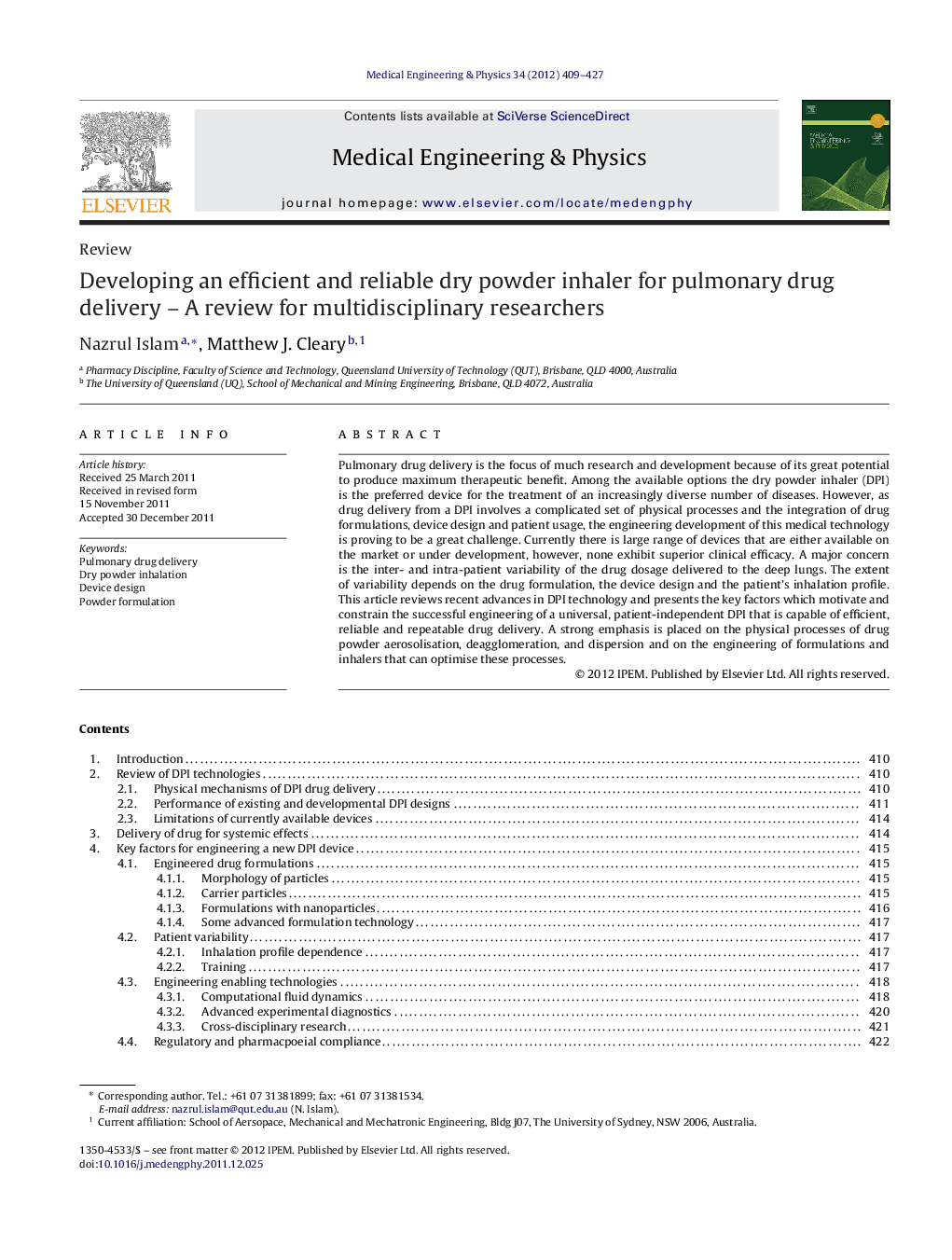| Article ID | Journal | Published Year | Pages | File Type |
|---|---|---|---|---|
| 876158 | Medical Engineering & Physics | 2012 | 19 Pages |
Pulmonary drug delivery is the focus of much research and development because of its great potential to produce maximum therapeutic benefit. Among the available options the dry powder inhaler (DPI) is the preferred device for the treatment of an increasingly diverse number of diseases. However, as drug delivery from a DPI involves a complicated set of physical processes and the integration of drug formulations, device design and patient usage, the engineering development of this medical technology is proving to be a great challenge. Currently there is large range of devices that are either available on the market or under development, however, none exhibit superior clinical efficacy. A major concern is the inter- and intra-patient variability of the drug dosage delivered to the deep lungs. The extent of variability depends on the drug formulation, the device design and the patient's inhalation profile. This article reviews recent advances in DPI technology and presents the key factors which motivate and constrain the successful engineering of a universal, patient-independent DPI that is capable of efficient, reliable and repeatable drug delivery. A strong emphasis is placed on the physical processes of drug powder aerosolisation, deagglomeration, and dispersion and on the engineering of formulations and inhalers that can optimise these processes.
